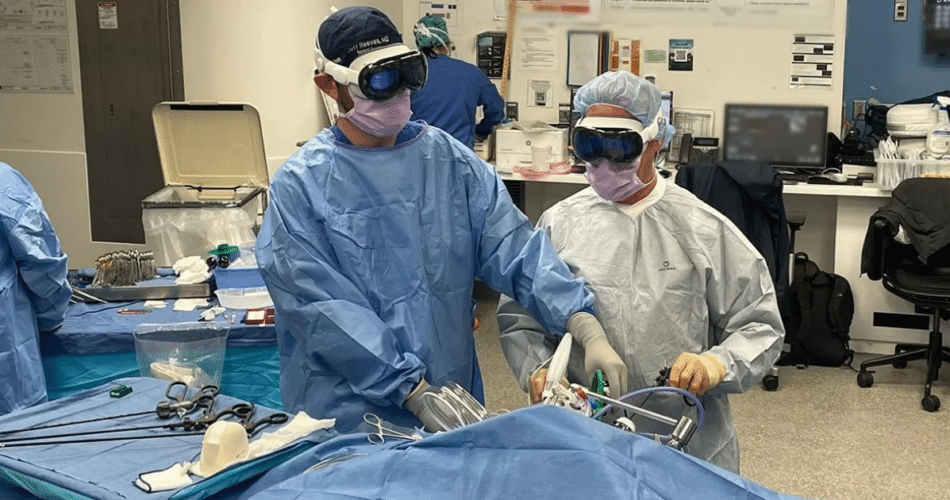Surgeons at the University of California, San Diego (UCSD) have begun integrating the Apple Vision Pro mixed-reality headset into their surgical practices, performing over 20 minimally invasive surgeries with this innovative technology. Dr. Santiago Horgan, the director of the Center for Future Surgery at UCSD, has voiced strong support for the Vision Pro, suggesting that it may be more transformative for surgical procedures than robotic assistance. While the headset’s price tag of $3,500 may seem steep for consumers, it is considered cost-effective for hospitals, especially when compared to the often exorbitant costs of traditional medical equipment.
During laparoscopic surgeries, surgeons typically use a camera inserted through a small incision, displaying the video feed on nearby monitors. This approach requires them to shift their attention back and forth between the screen and the patient, which can lead to discomfort and inefficiency. The Vision Pro streamlines this process by allowing surgeons to access essential information, such as CT scans and patient vitals, directly in their line of sight. This capability significantly reduces the need for awkward body positioning, enhancing comfort and focus during surgeries.
Dr. Horgan’s previous experiences with other augmented reality headsets, such as Google Glass and Microsoft’s HoloLens, left him unimpressed due to their inadequate display quality. However, upon testing the Vision Pro prior to its official launch, he was “blown away” by the high-resolution OLED displays, which exceeded his expectations. The initial surgery performed using the headset involved a paraesophageal hernia, marking a significant milestone in the integration of mixed-reality technology into surgical practices.
Not only has the Vision Pro enhanced surgical procedures, but it also addresses a critical issue in the medical field: surgeon ergonomics. A study revealed that a significant percentage of surgeons suffer from discomfort and even contemplate early retirement due to pain associated with their work. By enabling surgeons to keep their focus on the patient without the need to frequently glance at monitors, the Vision Pro reduces the physical strain often experienced during lengthy operations.
Dr. Christopher Longhurst, chief clinical and innovation officer at UC San Diego Health, emphasized the headset’s cost-effectiveness compared to traditional surgical monitors, which can range from $20,000 to $30,000. The Vision Pro’s relatively low price point positions it as a feasible investment for healthcare facilities, especially smaller hospitals that may struggle with tight budgets. Additionally, its versatility allows it to be used with various video feeds, further streamlining surgical setups and reducing the need for multiple devices.
Beyond its application in active surgeries, UCSD’s team is exploring the Vision Pro’s capabilities for creating 3D radiology imaging and other medical applications. With ongoing tests and potential studies on the headset’s benefits, experts believe that mixed-reality technology will become standard practice in operating rooms worldwide in the coming years.
(via Time)
Subscribe to our email newsletter to get the latest posts delivered right to your email.

